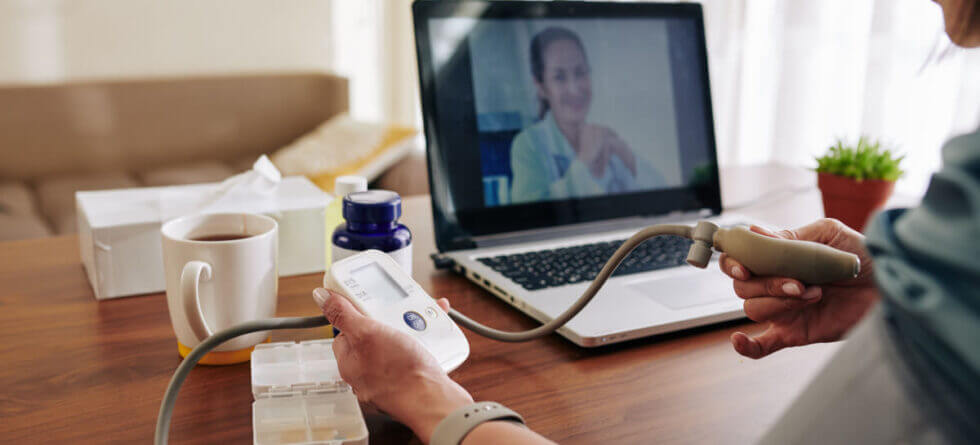Introduction
Healthcare has witnessed significant advancements in recent years, driven by the rapid growth of technology. From telemedicine to remote diagnostics and wearable devices, innovative healthcare technologies are transforming how medical professionals deliver care and patients access it. In this article, we will delve into the world of healthcare technology and telemedicine, exploring how these advancements are revolutionizing remote care delivery while using simple yet professional language to educate and inform.
Telemedicine: Bridging the Gap in Healthcare Access
Telemedicine, also known as telehealth, refers to the remote delivery of healthcare services using telecommunications technology. This approach allows patients to consult with healthcare providers over video calls or text messaging platforms, removing the barriers of distance and improving access to medical expertise. Telemedicine holds immense potential for individuals in rural or underserved areas, who may struggle to access quality healthcare due to geographical constraints.
With telemedicine, patients can connect with healthcare professionals remotely, avoiding the need for extensive travel and long wait times. This technology enables virtual consultations, diagnoses, and even prescription refills in real-time. Through secure platforms, medical professionals can review patient information, offer advice, and monitor conditions from a distance. Telemedicine not only enhances healthcare access but also reduces healthcare costs and improves resource allocation.
Remote Patient Monitoring: Bringing Healthcare Home
Remote patient monitoring (RPM) is another innovation that has revolutionized healthcare delivery. Thanks to advancements in wearable technology and connected devices, healthcare professionals can now monitor patients’ health remotely on an ongoing basis. Patients can wear devices that track vital signs, such as heart rate, blood pressure, and blood glucose levels, allowing clinicians to monitor their conditions from a distance.
RPM not only improves patient outcomes but also reduces the need for frequent hospital visits, particularly for individuals with chronic conditions. By leveraging technology, healthcare providers can detect potential health issues early, intervene promptly, and provide personalized care plans. Furthermore, RPM helps patients become active participants in their healthcare, as they are more empowered to make informed decisions about their well-being.
Artificial Intelligence in Healthcare: Enhancing Diagnosis and Treatment
Artificial intelligence (AI) is rapidly transforming the healthcare landscape, particularly in the fields of diagnosis and treatment. Through machine learning algorithms, AI can analyze vast amounts of patient data, identify patterns, and provide insights that can facilitate accurate diagnoses. AI-powered diagnostic tools are being developed to assist healthcare professionals in interpreting medical images, such as X-rays or MRIs, with a high level of accuracy.
In addition to diagnosis, AI is also making strides in treatment optimization. AI algorithms can analyze patient data, including genetic information and medical history, to offer personalized treatment plans. By leveraging AI, clinicians can make more informed decisions about medication dosage, surgical procedures, and treatment pathways, leading to improved patient outcomes and more efficient healthcare delivery.
Blockchain Technology: Securing Patient Data and Enhancing Interoperability
Blockchain technology, initially associated with cryptocurrencies, is now making inroads in healthcare. Blockchain offers a decentralized and secure method for storing and sharing electronic health records (EHRs) and other patient data. By utilizing cryptography and a distributed ledger, blockchain ensures that patient data remains tamper-proof, protecting sensitive information from unauthorized access.
Moreover, blockchain can enhance interoperability in healthcare by facilitating seamless sharing of medical data among healthcare providers. This technology enables an efficient and secure exchange of information, streamlining care coordination and reducing errors resulting from missing or fragmented patient data. Additionally, blockchain has the potential to support clinical trials, supply chain management, and medical research, paving the way for more effective and transparent healthcare systems.
Ethical Considerations and Future Prospects
While healthcare technology and telemedicine bring advancements and benefits, there are ethical considerations that need to be addressed. Patient privacy, data security, and the potential for bias in algorithms demand careful regulation and oversight. The responsible adoption and implementation of these innovations require a balance between promoting accessibility and ensuring patient safety.
Looking ahead, the future of healthcare technology and telemedicine seems promising. As technology continues to evolve, we can expect further improvements in remote care delivery, personalized medicine, and patient engagement. The integration of virtual reality, 5G network connectivity, and robotics holds immense potential for enhancing healthcare outcomes and expanding access to specialized care.
Conclusion
Healthcare technology and telemedicine have come a long way in revolutionizing the delivery of remote care. With telemedicine, access to healthcare has become more convenient and cost-effective, bridging the gap in healthcare access. Remote patient monitoring empowers patients and improves outcomes by enabling continuous health tracking. AI and blockchain technology enhance diagnosis, treatment, and data security, providing personalized care and streamlined healthcare systems.
As these innovations evolve, it is essential to ensure the responsible and ethical implementation of technology in healthcare. By embracing these advancements and addressing the associated challenges, we can enhance healthcare access, foster patient empowerment, and improve overall health outcomes.




